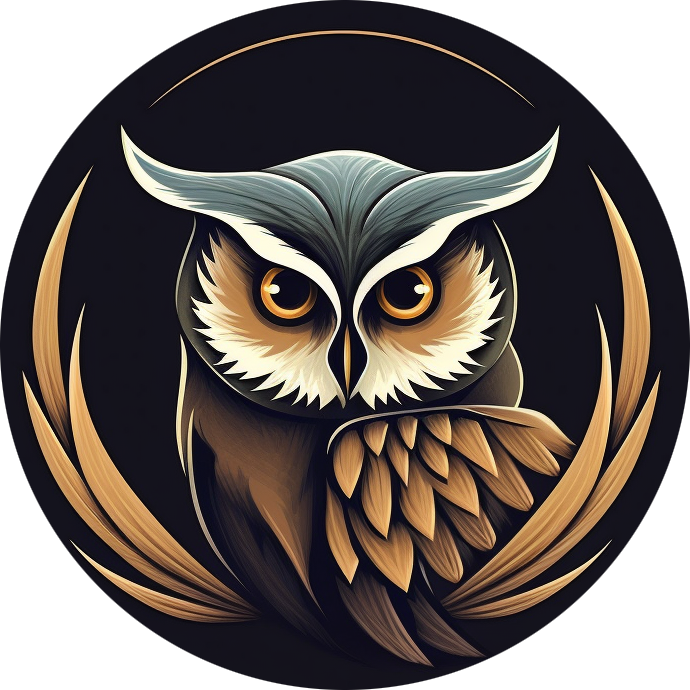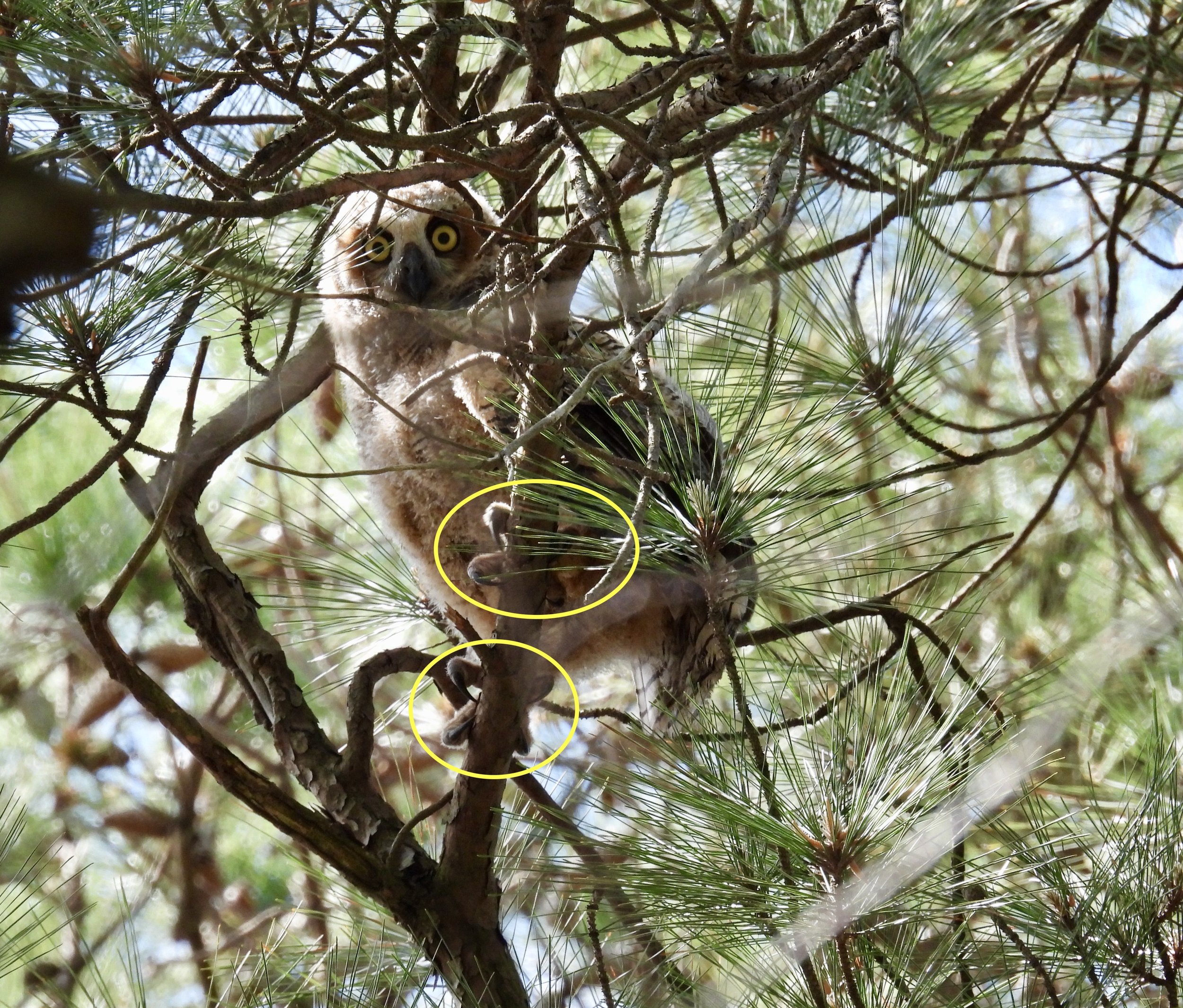Segment 5
Behavioral Activity
“So they spend a lot of time, now that they can see, looking around at their surroundings and focusing on various things.”
“Eyes of owls are fixed in their head, their ciliary muscles do not work like us that we can roll our eyes around in the head. Instead they are fixed, so as a result they have to turn their face and look head on at whatever they are looking at to get a focus.”
“They are developing a kind of coordination that definitely is a survival skill for when they are off the nest.”
Judy Wink photo archive
Judy Wink photo archive
-
Our next discussion will be on what the nestlings do on the nest.
And this probably is the most exciting for me.
In all my observations over the years, and it has been thousands of hours, this was the observations I liked most, because in working for my advanced degree I wanted to know what do owlets do on the nest to prepare them for survival when they get off the nest.
So I used a raptor actigram to record their behaviors, every single little thing they did I accounted for, and then in compiling the information was able to determine what do they do on the nest that helps them when they get off the nest.
And they do a thousand things on the nest that most people probably would overlook, but we'll get to that later.
Let's just say they're at day 19 to 21, they're pretty mobile, so what are they doing? Well always, always, always, eat, sleep, excrete are still the main functions while they're on the nest.
But when they're not doing that, they're walking around the nest, they're starting to have more visual acuity, so as a result they're focusing on things outside of the nest, particularly with a head bobbing maneuver.
A head bobbing maneuver means, follow me on this, do it, stretch the head up, stretch the head down, compress, go to the right side, go to the left side, come back to the middle.
That is head bobbing, only they do it a lot faster than I just explained.
And why they're doing that is they're getting a focal point on whatever they happen to be looking at.
I didn't mention this in the early overview, but eyes of owls are fixed in their head.
Their ciliary muscles do not work like us that we can roll our eyes around in the head.
Instead they're fixed.
So as a result, they have to turn their face and look head on at whatever they're looking at to get a focus.
In order to get depth perception, they need a couple mental pictures of this thing they're looking at.
So that's why the head bobbing, up, down, side, side, up, down, that, that, that, that, they keep going like that until they get a very acute picture, depth perception, and focus in on what it is.
So they spend a lot of time, now that they can see, looking around in their surroundings and focusing on various things.
Could be a leaf blowing in the wind, could be a squirrel running on the ground, but they have zeroed in on it at this stage of the game.
So if they're standing still and you see them doing a lot of head bobbing, they are very focused on something and they are learning what that something is.
Is it danger? Is it potential food? They have no idea at this stage of the game that it's potential food, but they're learning movements of animals, movements of vegetation.
They're learning people laughing.
They're learning all these extraneous things in the environment while they're in that time frame on the nest.
They're becoming very wary and visually acute and alert to auditory signals, so they're gathering in senses.
If they're moving about the nest, they're probably getting ready to excrete, and most of the times they'll excrete straight down on the nest, but on occasion they'll back up to the nest rim and excrete over the edge.
Owl nests are a mess, and they usually rot through in a couple years because there's prey remains, there's excrement, there are broken feathers, you know, all kinds of things and what the elements causes immediate, or not immediate, but a slow rot through the nest.
That's why they have to look for other nests periodically.
Okay, back to the owlets.
They start really interacting with each other and start using their feet a lot more on the nest.
By using their feet, that means they're stretching open their feet, walking flat footed, and I never did mention this to start with, but they do have a reversible toe, whereby they can go with two toes forward and two toes backwards.
So they start getting some dexterity by grabbing a piece of the substrate of the nest, or a stick, and they're experimenting.
They're starting to get all their parts working together.
They're developing some kind of coordination that definitely is a survival skill when they're off the nest.
Their interaction with each other is heavy at this time because once they fledge, their interaction with each other will be very limited.
But at the time when they're both in the nest cup yet, they head bump each other, they knock into each other, trying to knock each other over.
They don't know exactly what the sibling is, but they know it's a good thing to play around with.
It entertains them in the course of the day.
And this agility that they're learning by contact with each other, by reaching out with the foot, etc., is preparing them for down the road.
Their feather growth is very rapid, so they spend a lot of time preening.
They are also beginning to develop their muscles a little bit more.
So you'll see a couple of maneuvers like single wing stretch, double wing stretch, single wing, single leg.
They don't do double wing and double leg at this point, but they do a lot of stretching.
Not quite flapping yet until past 30 days of age, but they will stretch out and they start exercising their muscles a little bit.
All of this is critical for the development for their next stage in getting ready to branch or fledge.










